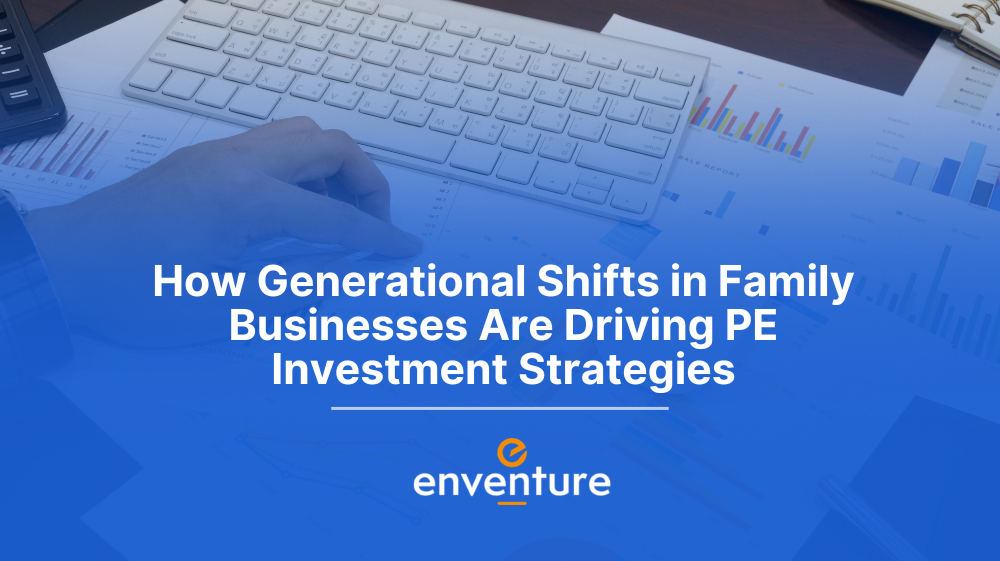Discover how generational shifts in family businesses are reshaping private equity (PE) strategies. Learn how next-gen leaders are embracing external capital, digital transformation, and professional management—creating new opportunities and challenges for PE firms.

Family-owned businesses have long been a cornerstone of global economies, accounting for a significant share of GDP and employment across regions. However, as these enterprises mature and transition leadership from founders to their next of kin, a generational shift is underway—one that is reshaping the private equity (PE) investment landscape.
Today’s younger family business leaders are rewriting the rulebook, ushering in a wave of openness toward external capital, professional governance, and technological innovation. These changes are creating fertile ground for PE firms that know how to navigate the unique dynamics of family-run enterprises.
A New Generation, A New Mindset
One of the most notable shifts in family businesses is the evolving attitude of younger generations toward growth, risk, and external involvement. Traditionally, older generations prioritized control, stability, and organic growth. In contrast, millennial and Gen Z successors are more inclined to pursue:
-
Scalable growth through capital infusion
-
Digital transformation and tech adoption
-
Professional management and governance structures
According to industry research, younger family members are increasingly viewing private equity not as a threat to legacy but as a strategic partner capable of driving modernization, international expansion, and long-term competitiveness.
Why PE Firms Are Taking Notice
For PE investors, these generational transitions represent a window of opportunity. Family businesses led by the next generation often have solid foundations—trusted brands, deep market knowledge, loyal customers—but may lack the resources or expertise to scale efficiently.
Private equity firms bring strategic capital, operational experience, and a growth-oriented mindset. Their ability to unlock value through digitization, restructuring, or market expansion aligns closely with the ambitions of next-gen leaders.
Key drivers of PE interest include:
-
Succession challenges: Many families struggle with leadership transitions. PE firms can step in as transitional partners, providing interim leadership or helping install a new management team.
-
Desire for partial exits: Younger leaders may want to de-risk their personal wealth or allow retiring family members to exit, creating buy-in opportunities for minority or majority PE investments.
-
Operational improvement: PE firms offer access to playbooks for driving efficiency, improving governance, and entering new markets—something many legacy businesses struggle to do internally.
Challenges PE Firms Must Navigate
While the opportunity is significant, investing in family businesses during generational change comes with its own set of complexities:
-
Emotional ties and legacy concerns: Even if younger leaders are forward-thinking, they often need to respect the founder’s legacy, creating a delicate balancing act between innovation and tradition.
-
Divergent generational visions: Differing strategic priorities can lead to friction—especially when the outgoing generation remains on the board or holds equity.
-
Opaque governance structures: Many family-run businesses lack formalized processes or reporting standards, which can hinder due diligence and post-deal integration.
To mitigate these challenges, PE firms must be more than just capital providers—they must act as partners, diplomats, and enablers of transformation.
Strategies for PE Firms to Unlock Long-Term Value
To succeed in this evolving environment, PE firms should tailor their approach:
- Build trust early: Establish rapport not just with the incoming generation but with the broader family to address legacy concerns and secure buy-in.
- Offer flexible deal structures: Provide options for phased exits, family co-investment, or minority stakes to respect ownership sensitivities.
- Enable professionalization: Help introduce independent boards, enhance financial controls, and recruit non-family executives to professionalize the organization.
- Champion digital transformation: Support technology adoption in marketing, operations, and supply chain to improve competitiveness and scalability.
- Support succession planning: Offer mentorship, executive coaching, or leadership development to help next-gen leaders step into their roles with confidence.
Conclusion
Generational shifts in family businesses are no longer a slow-moving undercurrent—they are a powerful tide shaping the future of private equity investment. For PE firms that can adapt to the nuanced dynamics of family enterprises and build partnerships based on trust, transparency, and shared ambition, the rewards can be substantial.
As younger generations continue to redefine what it means to lead a legacy business, the intersection of family ownership and private equity presents a unique—and timely—opportunity to co-create enduring value.
Bold Moves,
Brighter Futures
Let's team up and make a difference.
Subscribe to our newsletter
Enventure is an exit-driven fund with high-yield opportunities in the healthcare, space, and green tech sectors across the US and India.
Mail Us
3103 Kewanee Ln,
Naperville, IL, 60564
Copyright © 2025 Enventure, all rights reserved.
